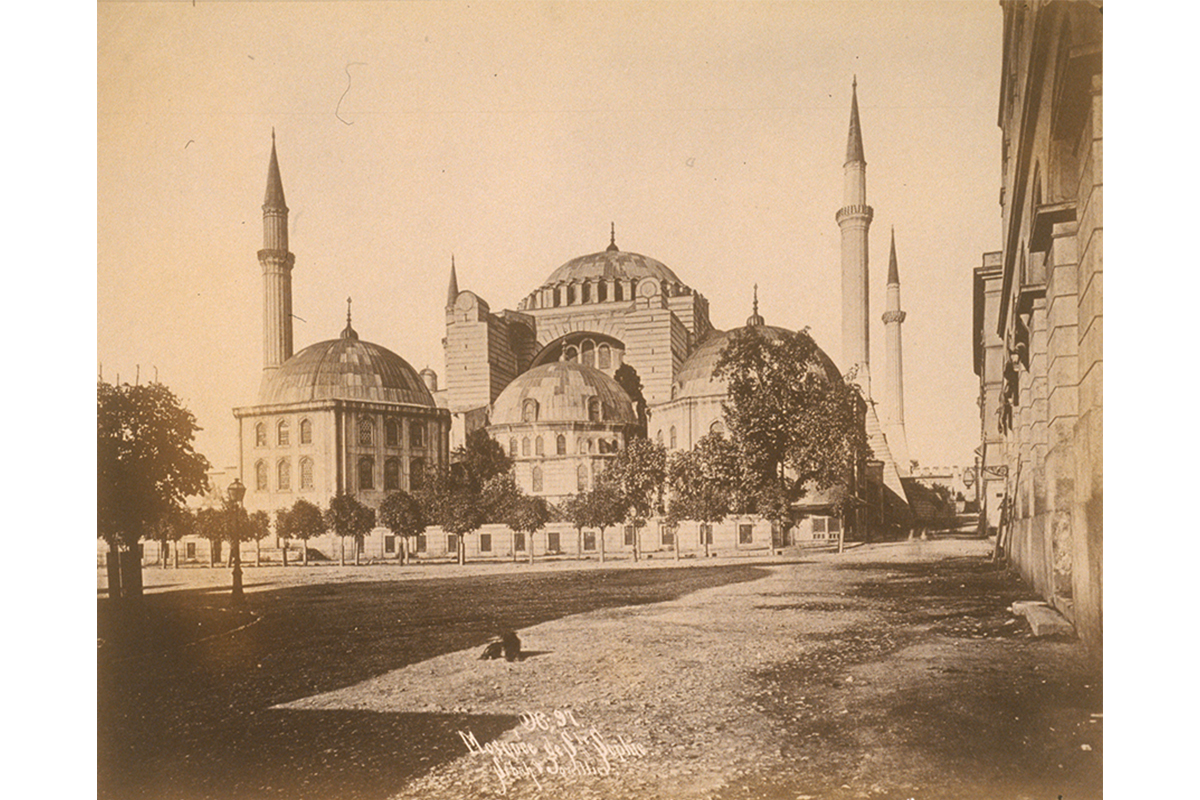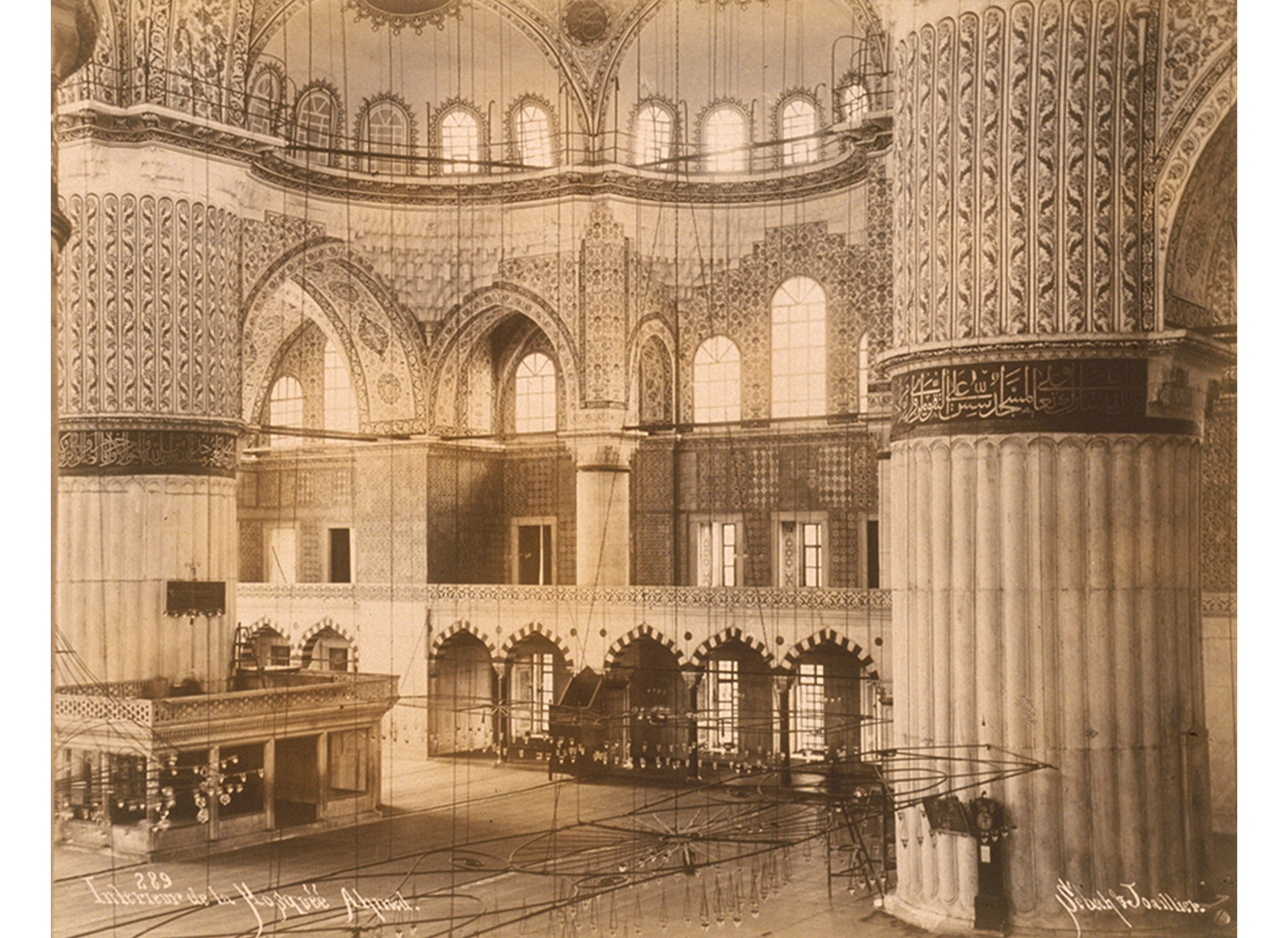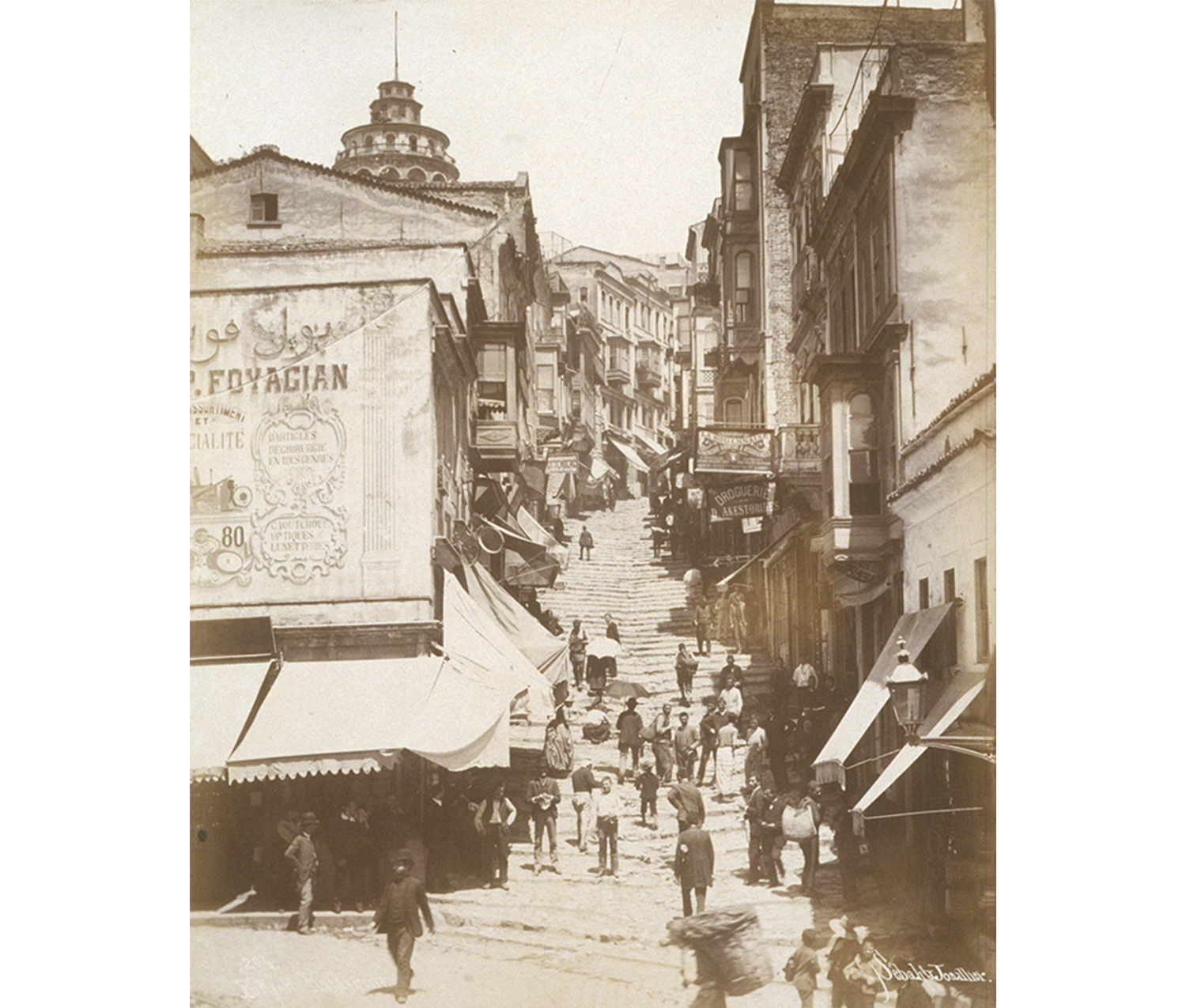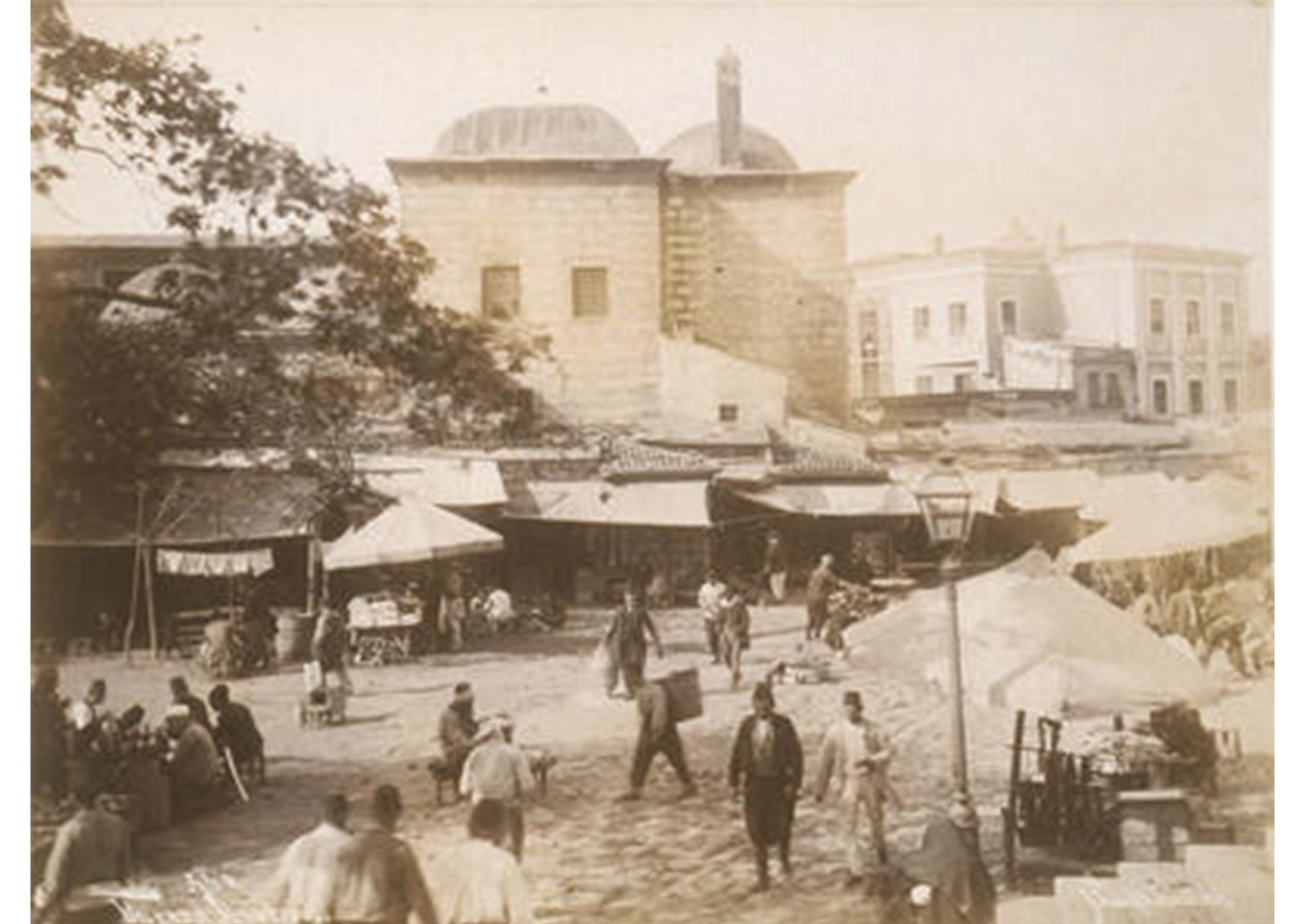
Photography in Ottoman Istanbul
Maggie Kurkoski is a member of the Smith College class of 2012 and the Brown Post-Baccalaureate Curatorial Fellow in the Cunningham Center.
Postcards are an enormously popular way to share the memories of your journey with other people, and nearly all of us have received a postcard at one time or another. Like many people, I have a postcard collection, full of images from places I’ve gone or where my friends have travelled. My postcards are a physical reminder of memories I treasure.
At the beginning of the 19th century, improved travel by train and by steamship offered Europeans greater access to Turkey and to Constantinople, then the capital of the Ottoman Empire. A traveler no longer needed to be wealthy to go in comfort throughout the near East. Now, a middle-class German could sign on for a planned tour that embarked from Italy, stopped at the pyramids of Cairo, traveled to the holy sites of Palestine, and finally landed in Constantinople. With this influx of European travelers came a greater demand for art souvenirs, particularly photographs that could capture the sights and cultures of these far-off locales.

The Blue Mosque
Sebah & Joaillier. Turkish, established Cairo, Egypt 1888–1950s. 101. Mosquee du Sultan - Ahmed ca. 1860s. Albumen print. Purchased with Hillyer-Tryon-Mather Fund, with funds given in memory of Nancy Newhall (Nancy Parker, class of 1930) and in honor of Beaumont Newhall, and with funds given in honor of Ruth Wedgwood Kennedy Photography by Petegorsky/Gipe. SC 1982.38.970.
One photographer who took advantage of this growing market was Pascal Sebah. Under the Muslim Ottoman Empire, Constantinople was a thriving city with a multiethnic population, and Pascal’s family reflects this diversity: his father was a Syrian Catholic and his mother was Armenian.
Sebah opened his first studio in 1857 at the age of thirty-four. His reputation quickly grew, earning accolades from the Société Française de Photographie in Paris. During the height of his career, he collaborated with innovative Turkish painter Osman Hamdi Bey, and exhibited works at the 1873 Ottoman exhibition in Vienna.

Interior of the Blue Mosque
Sebah & Joaillier. Turkish, established Cairo, Egypt 1888–1950s. 289. Interieur de la Mosquee Ahmed, ca. 1860s. Albumen print. Purchased with Hillyer-Tryon-Mather Fund, with funds given in memory of Nancy Newhall (Nancy Parker, class of 1930) and in honor of Beaumont Newhall, and with funds given in honor of Ruth Wedgwood Kennedy Photography by Petegorsky/Gipe. SC 1982.38.971.
Spurred on by his increasing reknown, Sebah opened a second studio abroad in Cairo. His photographs now included the sights and streets of Egypt. Pascal Sebah continued to travel between these two cities, and to show his work at international exhibitions, until he passed away in 1886 from the debilitating aftermath of a brain hemorrhage.
Still, his legacy continued. His son Jean Sebah took up his father’s business, partnering with fellow photographer Policarpe Joaillier. In 1893, Sultan Abdulhamid made a gift of fifty-one photographic albums representing the span of the Ottoman Empire, two of which were produced by Sebah & Joaillier (as their studio came to be known). The albums, now housed in the Library of Congress, were received by then-president Grover Cleveland.

The Galata Tower and the Beyoğlu neighborhood
Sebah & Joaillier. Turkish, established Cairo, Egypt 1888–1950s. 204. Yu.....Kaldirim(?), ca. 1860s. Albumen print. Purchased with Hillyer-Tryon-Mather Fund, with funds given in memory of Nancy Newhall (Nancy Parker, class of 1930) and in honor of Beaumont Newhall, and with funds given in honor of Ruth Wedgwood Kennedy Photography by Petegorsky/Gipe. SC 1982.38.976.
Many of the sites Pascal Sebah and his successors captured – the Hagia Sofia, the Blue Mosque, the Galata Tower– are still instantly recognizable to any modern person in Turkey. The clothes many have changed, and the advertisements, but the bones of this age-old city still remain.

Bazaar in Istanbul
Sebah & Joaillier. Turkish, established Cairo, Egypt 1888–1950s. 440. Bazar a Istamboul, ca. 1860s. Albumen print. Purchased with Hillyer-Tryon-Mather Fund, with funds given in memory of Nancy Newhall (Nancy Parker, class of 1930) and in honor of Beaumont Newhall, and with funds given in honor of Ruth Wedgwood Kennedy Photography by Petegorsky/Gipe. SC 1982.38.975.